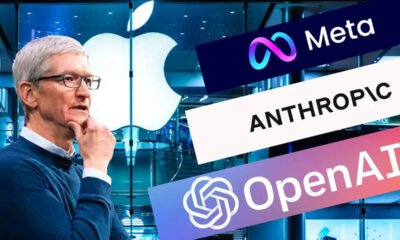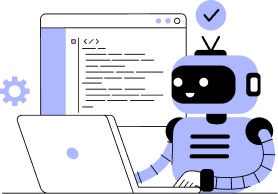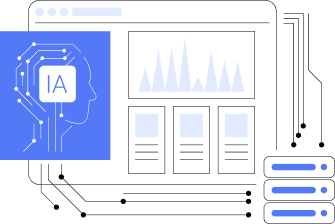Ethics & Policy
From Waiting Tables To Building A $4 Trillion Giant: Meet Jensen Huang, The AI Billionaire Worth Rs 9.91 Lakh Crore, And 7 Other Tech Titans Shaping The Future | People

Top 7 Richest AI Billionaires in the World: The Incredible Stories Behind Fortune Makers Like Jensen Huang, Alexandr Wang, and Dario Amodei
Artificial Intelligence. Just two words, but together they’ve rewritten the script of modern life. It’s recommending what you binge-watch on a Friday night, helping doctors diagnose faster than ever, and even powering the apps that claim they’ll find you love. What was once science fiction is now the air we breathe. And along the way, it has quietly created a brand-new class of billionaires.
In the past, tech tycoons were the scrappy nerds building websites in dorm rooms or fiddling with wires in their garages. Today’s big players aren’t so different—except their playground is machine learning models and neural networks that fuel everything from self-driving cars to quirky dating apps.
Here’s where the story gets even more cinematic: the world’s richest AI billionaire—Jensen Huang of Nvidia—once waited tables. Yes, before reshaping computing as we know it, he was serving diners. Today, he commands a personal fortune of $113 billion (Rs 9.91 lakh crore). His rise sets the tone for this fascinating look at the seven names shaping the AI future—while laughing all the way to the bank.
Jensen Huang – From Balancing Plates to Powering the World

Net worth: $113 billion
Role: CEO and Co-Founder, Nvidia
Born in Taiwan, raised in the US, and once a restaurant waiter, Jensen Huang is living proof that humble beginnings can lead to Silicon Valley royalty. He co-founded Nvidia in 1993, initially focusing on graphics cards for gamers. Those very chips would later become the secret sauce powering AI models worldwide.
Today, Nvidia is valued at more than $4 trillion, fuelling everything from medical breakthroughs to language models. Huang’s trademark leather jacket has become nearly as iconic as the company’s bright green logo. Fun fact: he still owns about 3% of Nvidia, which is why his bank balance looks the way it does.
Alexandr Wang – The 26-Year-Old Wonderkid

Net worth: $2.7 billion
Role: CEO and Co-Founder, Scale AI
Most people at 26 are still figuring life out. Alexandr Wang, on the other hand, has already figured out how to join the billionaire club. A college dropout from MIT, he founded Scale AI, a company that provides high-quality data—the essential fuel that powers AI models. Without it, even the smartest system is useless.
Valued at $14 billion, Scale AI works with giants like Meta and Google. Wang’s journey proves you don’t always have to build the flashiest AI engine; sometimes being the one supplying the “oil” for the race is enough.
Sam Altman – The Poster Boy of Generative AI
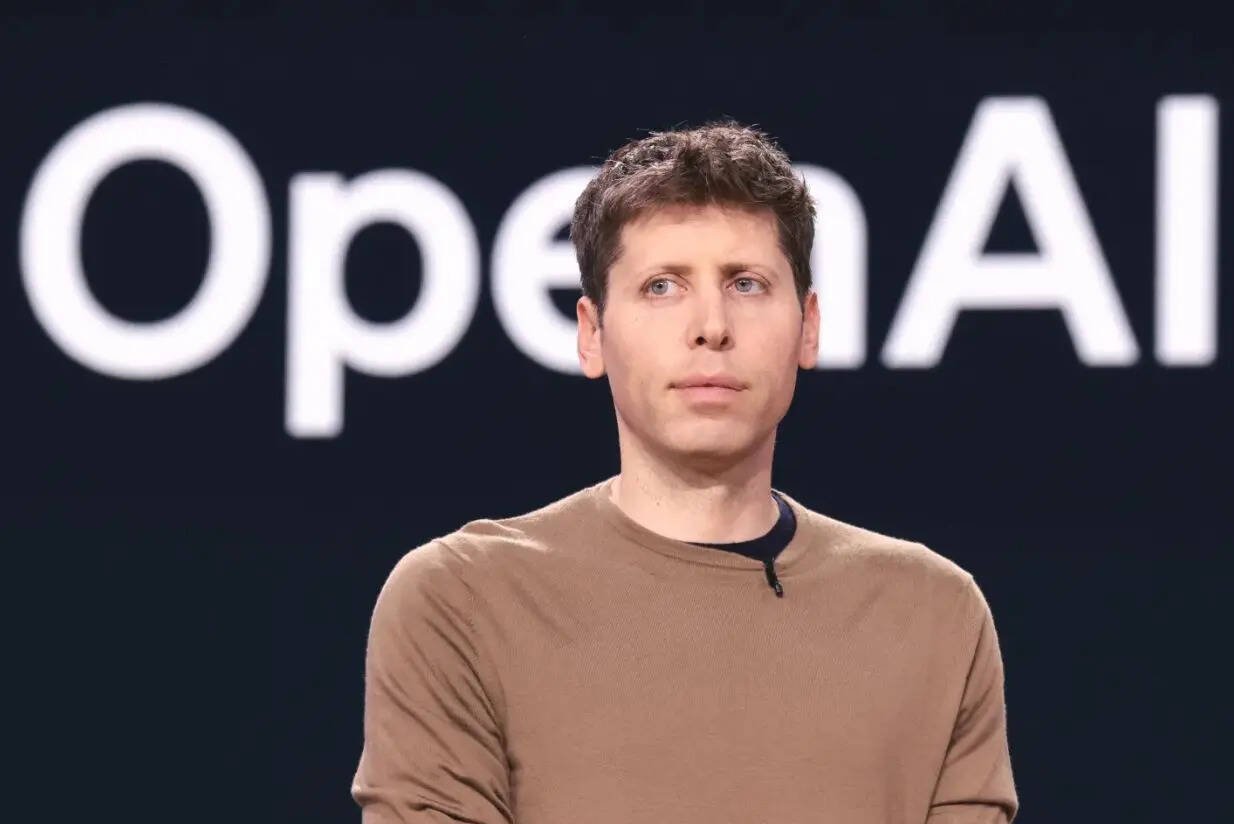
Net worth: $1.9 billion
Role: CEO, OpenAI
Sam Altman doesn’t own OpenAI, which surprises many, yet his net worth is close to $2 billion. How? By placing early bets on companies like Stripe and Reddit. But his fame truly comes from steering OpenAI into the global spotlight.
As the man behind ChatGPT’s rise, Altman has become a household name. He’s also one of the few billionaires openly shaping debates about the ethics, regulation, and risks of AI. Whether you agree with his views or not, he’s undeniably at the centre of the conversation.
Phil Shawe – The Translator Who Took Over the World
Net worth: $1.8 billion
Role: Co-CEO, TransPerfect
Phil Shawe’s empire began in an NYU dorm room. Today, TransPerfect is the largest translation company in the world, using AI to make sense of everything from legal documents and medical research to Hollywood scripts.
Owning 99% of the company doesn’t hurt either. What makes Shawe fascinating is how his brand of AI isn’t flashy. It’s quiet, precise, and life-changing in industries where accuracy is everything.
Dario Amodei – The Safety-First Visionary

Net worth: $1.2 billion
Role: CEO, Anthropic
Once a senior scientist at OpenAI, Dario Amodei branched out to form Anthropic—a company obsessed with building AI that is safe and aligned with human values. Investors loved the idea, pushing the company’s valuation past $61 billion.
In a world where most AI leaders chase speed and scale, Amodei is the one emphasising responsibility. His approach shows that wealth doesn’t just come from innovation, but from ensuring that innovation doesn’t run off the rails.
Liang Wenfeng – The Budget-Friendly Disruptor
Net worth: $1.0 billion
Role: CEO, DeepSeek
Liang Wenfeng stunned the industry with DeepSeek-R1, a low-cost alternative to language models like ChatGPT. It was so effective that Nvidia’s stock briefly wobbled—a rare achievement for a newcomer in such a crowded field.
Wenfeng isn’t your typical tech founder; he cut his teeth in finance before pivoting into AI. His rise underscores how the new wave of billionaires isn’t limited to Silicon Valley but is thriving across China too.
Yao Runhao – The Man Who Made AI Romantic
Net worth: $1.3 billion
Role: CEO, Paper Games
If you thought AI was only about robots and productivity, Yao Runhao will change your mind. His company, Paper Games, built “Love and Deepspace,” a wildly popular virtual dating game with over six million monthly users.
Targeting China’s massive female gaming market, Yao turned emotional connection into a billion-dollar business. Who knew algorithms could also double as matchmakers?
AI has moved from buzzword to necessity, and these seven billionaires are proof that the boom is rewriting wealth creation. From gaming and translation to hardware and ethics, they represent the vast (and often unexpected) directions AI is taking.
And here’s a thought: the next Jensen Huang may not be coding in Silicon Valley right now. They might just be serving your latte, waiting for their shot to change the world.
Credits: Forbes
Ethics & Policy
AIs intersection with Sharia sciences: opportunities and ethics

The symposium was held on September 2-3, 2025, at the forum’s headquarters. The symposium brought together a select group of researchers and specialists in the fields of jurisprudence, law, and scientific research.
AI between opportunities and challenges
The symposium highlighted the role of AI as a strategic tool that holds both promising opportunities and profound challenges, calling for conscious thinking from an authentic Islamic perspective that balances technological development with the preservation of religious and human values.
AI in Sharia sciences
The first day of the symposium featured two scientific sessions. Professor Fatima Ali Al Hattawi, doctoral researcher, discussed the topic of artificial intelligence and its applications in Sharia sciences.
AI in law
The second session featured Professor Abdulaziz Saleh Saeed, faculty member at the Mohammed bin Zayed University for Humanities, who presented a research paper titled “The Impact of Artificial Intelligence on Law and Judicial Systems.”
Prof. Abdulaziz explained that these technologies represent a true revolution in the development of judicial systems, whether in terms of accelerating litigation, enhancing the accuracy of judicial decisions, or even supporting lawyers and researchers in accessing precedents and rulings.
Prof. Abdulaziz explained that AI-enabled transformations are rapidly shaping legal practices and procedures, and that these tools offer tremendous potential for harnessing opportunities and addressing challenges using advanced technologies. He also addressed the importance of regulatory and legislative frameworks for protecting the human and legal values associated with justice, emphasising that the future requires the development of cadres capable of reconciling technology and law.
AI and Fatwa
The second day featured two scientific sessions. On Wednesday morning, the symposium, “Artificial Intelligence and Its Impact on Sharia Sciences,” was held. The symposium was attended by a select group of researchers, academics, and those interested in modern technologies and their use in serving Sharia sciences.
The second day’s activities included two main sessions. The first session was presented by Dr Omar Al Jumaili, expert and preacher at the Islamic Affairs and Charitable Activities Department (IACAD) in Dubai, presented a paper titled “The Use of Artificial Intelligence in Jurisprudence and Fatwa.” He reviewed the modern applications of these technologies in the field of fatwa, their role in enhancing rapid access to jurisprudential sources and facilitating accurate legal research. He also emphasised the importance of establishing legal controls that preserve the reliability of fatwas and protect them from the risks of total reliance on smart systems.
Ethics of using AI
The second panel was addressed by Eng. Maher Mohammed Al Makhamreh, Head of the Training and Consulting Department at the French College, who addressed “The Ethics of Using Artificial Intelligence in Scientific Research.” In his paper, he emphasised that technological developments open up broad horizons for researchers, but require a firm commitment to ethical values to ensure the integrity of research. He reviewed the most prominent challenges facing academics in light of the increasing reliance on algorithms, pointing to future opportunities in employing artificial intelligence to support Sharia studies without compromising their objectivity and credibility.
It is worth noting that the symposium witnessed broad engagement from participants, who appreciated the solid scientific presentations of the lecturers and expressed great interest in the future prospects offered by artificial intelligence in developing the fields of jurisprudence and scientific research.
Ethics & Policy
What does it mean to build AI responsibly? Principles, practices and accountability

Dr. Foteini Agrafioti is the senior vice-president for data and artificial intelligence and chief science officer at Royal Bank of Canada.
Artificial intelligence continues to be one of the most transformative technologies affecting the world today. It’s hard to imagine an aspect of our lives that is not impacted by AI in some way. From assisting our web searches to curating playlists and providing recommendations or warning us when a payment is due, it seems not a day goes by without assistance from an AI insight or prediction.
It is also true that AI technology comes with risks, a fact that has been well documented and is widely understood by AI developers. The race to use generative AI in business may pose a risk to safe adoption. As Canadians incorporate these tools into their personal lives, it has never been more important for organizations to examine their AI practices and ensure they are ethical, fair and beneficial to society. In other words, to practice AI responsibly.
So, in an era where AI is dominating, where do we draw the line?
When everyone is pressing to adopt AI, my recommendation is do so and swiftly, but start with deciding what you are NOT going to use it for. What is your no-go zone for your employees and clients? Devising principles should be a critical component of any organization’s AI ecosystem, with an organized and measured approach to AI that balances innovation with risk mitigation, aligns with human values and has a focus on well-being for all. This is particularly pronounced in highly regulated sectors where client trust is earned not just through results but also with transparency and accountability.
Encouraging this conversation early may help inform important decisions on your approach. At RBC we had the opportunity to discuss these concepts early in our journey, when we hired AI scientists and academics in the bank and were faced with the opportunity to push boundaries in the way we interact with our clients. A key decision that we made a decade ago was that we wouldn’t prioritize speed over safety. This fundamental principle has shaped our approach and success to date. We have high standards for bias testing and model validation and an expectation that we fully understand every AI that is used in our business.
This cannot just be a philosophical conversation or debate.
The plan to build AI according to a company’s ethos needs to be pragmatic, actionable and available for education and training to all employees. Organizations of all sizes and in all sectors should develop a framework of responsible AI principles to ensure the technology minimizes harm and will be used to benefit clients and the broader society. For large companies, this can manifest in how they build their models, but even small businesses can establish ground rules for how employees are permitted to use for example, off-the-shelf GenAI tools.
RBC aims to be the leader in responsible AI for financial services and we continue to innovate while also respecting our clients, employees, partners, inclusion and human integrity. The two can go hand-in-hand when using AI responsibly is a corporate priority. Our use of AI is underscored by four pillars: accountability, fairness, privacy and security and transparency.
From senior leaders to the data analysts working on the projects, we put the clients at the centre of our AI work by asking the right and strategic questions to ensure it aligns with RBC’s values. When developing AI products or integrating with a third-party vendor, organizations should consider adopting policies and guidelines to understand third-party risks such as scheduled audits, in-depth due diligence, product testing, user feedback, validation and monitoring to ensure AI systems are developed and deployed in a responsible and transparent manner.
Employee training is an equally important but often overlooked element of responsible AI, ensuring employees know not only how to prompt effectively, but also how to supervise the outputs. This includes guidance on the use of external tools for work-related products, the kinds of information that can be uploaded or included in prompts and use cases that have the most to gain from what AI can deliver safely.
At RBC, all leaders and executives who have access to GenAI tools complete training that addresses responsible AI considerations, governance and decision-making to enable informed oversight and guidance on responsible AI initiatives. Employees who are granted access to GenAI support tools need to take general training, which includes an introduction to responsible AI principles, concepts and ethical frameworks. AI models are subjected to thorough testing, validation and monitoring before they are approved for use. This is not a risk-averse culture. It’s a culture that honours the existing partnership it has with its clients.
This is not once and done. Ongoing governance to review and assess the principles remains important. RBC’s responsible AI working group continues to ensure the principles remain relevant, address business and stakeholder needs and drive linkages between the organization’s responsible AI principles, practices and processes.
Another approach is to partner with leaders including educational institutions and think tanks in the AI space to provide strategic opportunities to help drive responsible AI adoption. RBC recently partnered with MIT to join a newly formed Fintech Alliance, focused on addressing pressing matters around the ethical use of AI in financial services.
This type of fulsome approach helps recruit in the AI space from leading educational programs globally, which brings together divergent opinions and different work experience, creating a diverse workforce which creates an environment where collaboration, learning and solutions thrive.
As modern AI systems advance, navigating platform ethics can be complex. Implementing a strong responsible AI framework, inclusive of principles and practices, will ensure challenges are addressed ethically and AI systems are adopted responsibly.
This column is part of Globe Careers’ Leadership Lab series, where executives and experts share their views and advice about the world of work. Find all Leadership Lab stories at tgam.ca/leadershiplab and guidelines for how to contribute to the column here.
Ethics & Policy
10 Steps for Safe AI Deployment
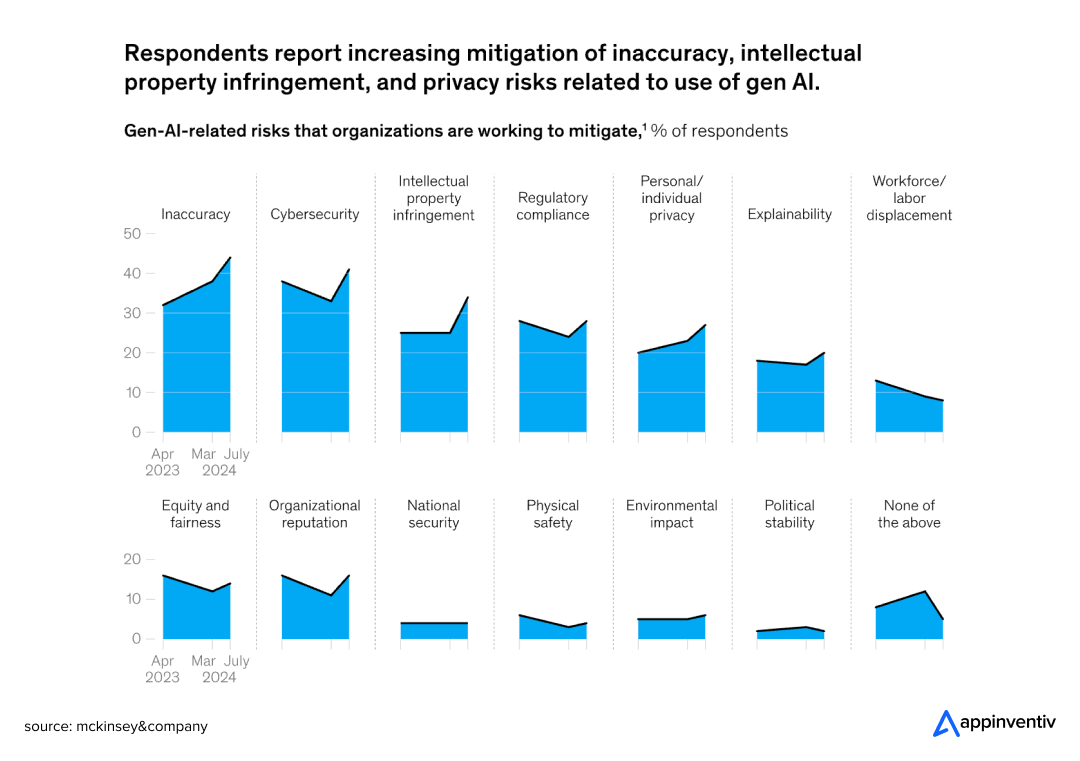
- Generative AI is a double-edged sword. It offers immense opportunities for growth and innovation. However, it also carries risks related to bias, security, and compliance
- Proactive governance is not optional. A responsible Generative AI deployment checklist helps leaders minimize risks and maximize trust.
- The checklist for Generative AI compliance assessment covers everything, including data integrity, ethical alignment, human oversight, continuous monitoring, and more.
- The ROI of responsible AI goes beyond compliance. This leads to increased consumer trust, reduced long-term costs, and a strong competitive advantage.
- Partner with AI experts like Appinventiv to turn Gen AI principles into a practical, actionable framework for your business.
The AI revolution is here, with generative models like GPT and DALL·E unlocking immense potential. In the blink of an eye, generative AI has moved from the realm of science fiction to a staple of the modern workplace. It’s no longer a question of if you’ll use it, but how and, more importantly, how well.
The potential is astounding: Statista’s latest research reveals that the generative AI market is projected to reach from $66.89 billion in 2025 to $442.07 billion by 2031. The race is on, and companies are deploying these powerful models to perform nearly every operational process. Businesses use Gen AI to create content, automate workflows, write code, analyze complex data, redefine customer experiences, and so on.
But as with any revolution, there’s a flip side. The same technology that can boost creativity can also introduce a host of unforeseen risks, from perpetuating biases to leaking sensitive data and creating “hallucinations” that are factually incorrect. The stake is truly high. According to McKinsey’s latest research, 44% of organizations have already experienced negative consequences from not evaluating generative AI risks.
As AI systems become integral to decision-making, the question arises: Are we ready to manage these gen AI risks effectively?
This is where the responsible AI checklist comes in. This blog covers the 10 critical AI governance questions every business leader must ask before deploying generative AI. These questions will help mitigate risks, build trust, and ensure that your AI deployment efforts align with legal, ethical, and operational standards.
AI Risks Are Real. Act Now!
Contact us for a comprehensive AI risk assessment to maximize AI benefits and minimize risks.
Why Businesses Across Industries Prioritize Responsible AI Deployment
Before we dive into the questions, let’s be clear: responsible AI isn’t an afterthought; it’s a core component of your business strategy. Without a responsible governance framework, you may risk technical failures, your brand image, your finances, and your very relationship with your customers. Here is more on why it’s essential for leaders to prioritize responsible AI practices:

Mitigating Risk
Responsible AI is not about slowing down innovation. It’s about accelerating it safely. Without following Generative AI governance best practices, AI projects can lead to serious legal, financial, and reputational consequences.
Companies that rush into AI deployment often spend months cleaning up preventable messes. On the other hand, companies that invest time upfront in responsible AI practices in their AI systems actually work better and cause fewer operational headaches down the road.
Enhancing Operational Efficiency
By implementing responsible AI frameworks, businesses can make sure their AI systems are secure and aligned with business goals. This approach helps them avoid costly mistakes and ensures the reliability of AI-driven processes.
The operational benefits are real and measurable. Teams stop worrying about whether AI systems will create embarrassing incidents, customers develop trust in automated decisions, and leadership can focus on innovation instead of crisis management.
Staying Compliant
The EU AI Act is now fully implemented, with fines reaching up to 7% of global revenue for serious violations. In the US, agencies like the EEOC are actively investigating AI bias cases. One major financial institution recently paid $2.5 million for discriminatory lending algorithms. Another healthcare company had to pull its diagnostic AI after privacy violations.
These are not isolated incidents. They are predictable outcomes when companies build and deploy AI models without a proper Generative AI impact assessment.
Upholding Ethical Standards
Beyond legal compliance, it is essential that AI systems operate in accordance with principles of fairness, transparency, and accountability. These ethical considerations are necessary to protect both businesses and their customers’ sensitive data.
Companies demonstrating responsible AI practices report higher customer trust scores and significantly better customer lifetime value. B2B procurement teams now evaluate Generative AI governance as standard vendor selection criteria.
Major business giants, including Microsoft, Google, and NIST, are already weighing in on Generative AI risk management and responsible AI practices. Now it’s your turn. With that said, here is a Generative AI deployment checklist for CTOs you must be aware of:
The Responsible AI Checklist: 10 Generative AI Governance Questions Leaders Must Ask
So, are you ready to deploy Generative AI? That’s great. But before you do, you must be aware of the Pre-deployment AI validation questions to make sure you’re building on a solid foundation, not quicksand. Here is a series of Generative AI risk assessment questions to ask your teams before, during, and after deploying a generative AI solution.
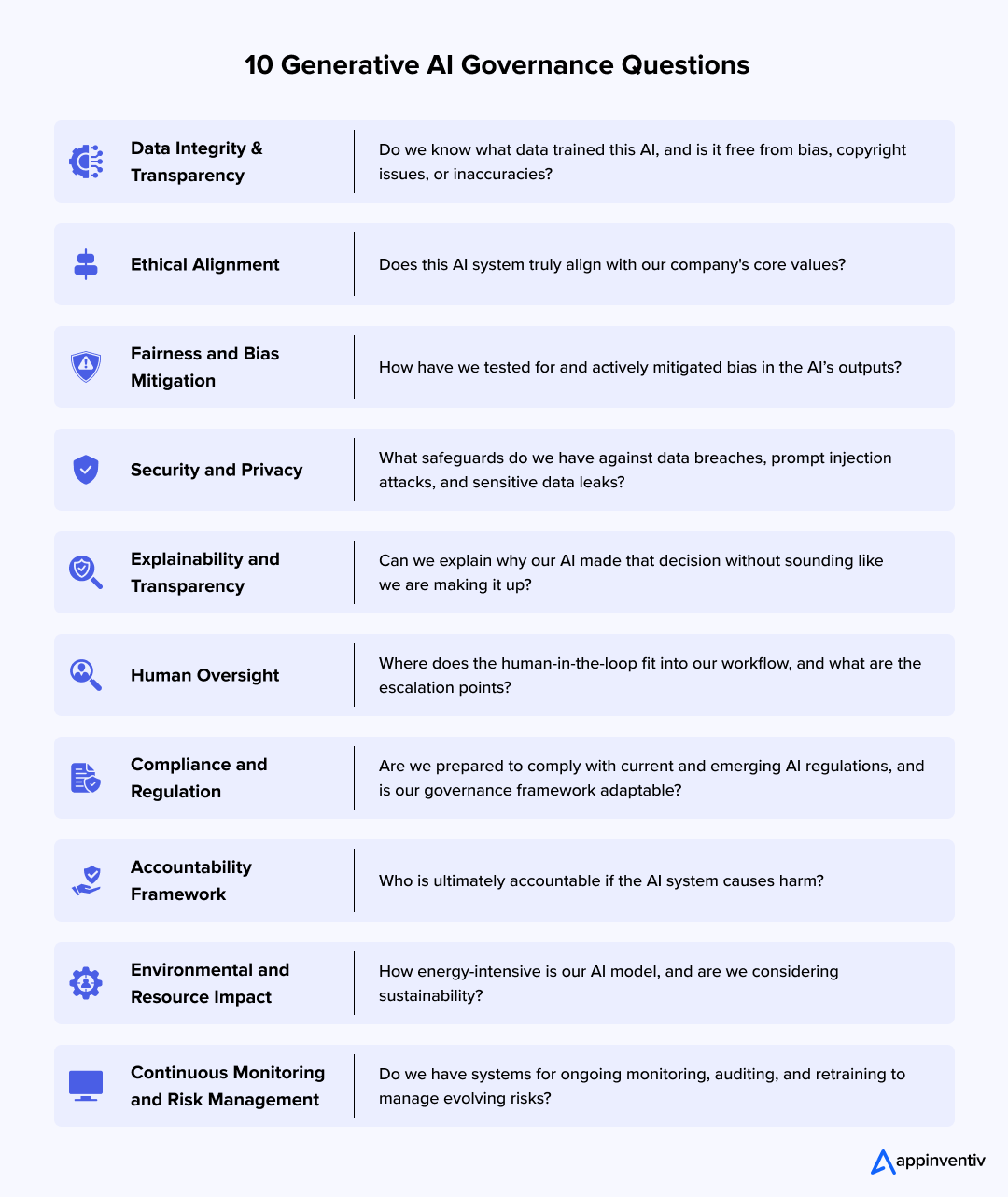
1. Data Integrity and Transparency
The Question: Do we know what data trained this AI, and is it free from bias, copyright issues, or inaccuracies?
Why It Matters: An AI model is only as good as its data. Most foundational models learn from a massive, and often messy, collection of data scraped from the internet. This can lead to the model making up facts, which we call “hallucinations,” or accidentally copying copyrighted material. It’s a huge legal and brand risk.
Best Practice: Don’t just take the vendor’s word for it. Demand thorough documentation of the training data. For any internal data you use, set clear sourcing policies and perform a detailed audit to check for quality and compliance.
2. Ethical Alignment
The Question: Does this AI system truly align with our company’s core values?
Why It Matters: This goes way beyond checking legal boxes. This question gets to the heart of your brand identity. Your AI doesn’t just process data; it becomes the digital face of your values. Every decision it makes, every recommendation it offers, represents your company.
Let’s say your company values fairness and equality. If your new AI hiring tool, through no fault of its own, starts to favor male candidates because of an undetected bias, that’s a direct contradiction of your values. It’s a fast track to a PR crisis and a loss of employee morale.
Best Practice: Create an internal AI ethics charter. Form a cross-functional ethics board with representatives from legal, marketing, and product teams to review and approve AI projects.
At Appinventiv, we have seen this principle in action. When developing JobGet, an AI-driven job search platform, we ensure AI matching algorithms promote equal opportunity for everyone, which aligns with our clients’ diversity commitments. This job search platform ensures that no candidate is unfairly disadvantaged by bias, creating a transparent and trustworthy platform for job seekers and employers alike.
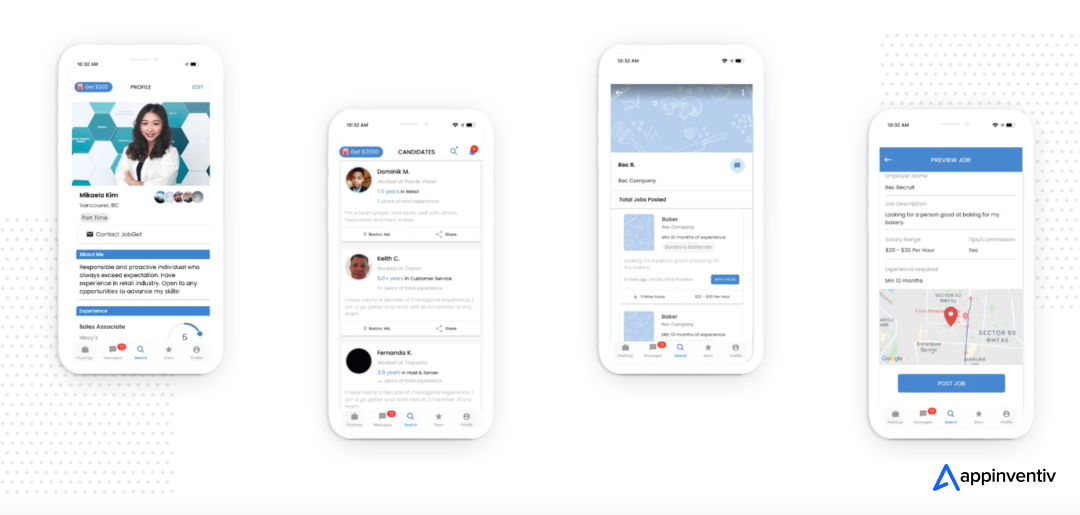
3. Fairness and Bias Mitigation
The Question: How have we tested for and actively mitigated bias in the AI’s outputs?
Why It Matters: Bias in AI is not some abstract academic concern; it’s a business-killing reality that has already destroyed careers and companies. You might be aware of the facial recognition systems that couldn’t recognize darker skin tones and loan algorithms that treated identical applications differently based on zip codes that correlated with race.
Here’s what keeps business leaders awake at night: your AI might be discriminating right now, and you’d never know unless you specifically looked for it. These systems are brilliant at finding patterns, including patterns you never intended them to learn.
Best Practice: Test everything. Use datasets that actually represent the real world, not just convenient samples. Regularly audit AI models’ performance across different groups and discover uncomfortable truths about their systems.
Also Read: Benefits of Facial Recognition Software Development
4. Security and Privacy
The Question: What safeguards do we have against data breaches, prompt injection attacks, and sensitive data leaks?
Why It Matters: Generative AI creates new security weak points. An employee might paste confidential customer information into a public model to get a quick summary. That data is then out in the wild and misused by cyber fraudsters. As IBM’s 2024 report showed, the cost of a data breach jumped to $4.88 million in 2024 from $4.45 million in 2023, a 10% spike from the previous year. These are real vulnerabilities that require a proactive defense.
Best Practice: Implement strict data minimization policies and use encryption. Train employees on the risks and set up secure, private environments for any sensitive work.
5. Explainability and Transparency
The Question: Can we explain why our AI made that decision without sounding like we are making it up?
Why It Matters: Many advanced AI models operate as “black boxes”; they give you answers but refuse to show their work. That might sound impressive in a science fiction movie, but it’s a nightmare for real business applications.
Imagine explaining to an angry customer why your “black box” algorithm rejected their loan application. Good luck with that conversation. In high-stakes situations like medical diagnosis or financial decisions, “because the AI said so” isn’t going to cut it with regulators, customers, or your own conscience.
Best Practice: Use Explainable AI (XAI) tools to visualize and interpret the model’s logic. Ensure a clear audit trail for every output and decision the AI makes.
6. Human Oversight
The Question: Where does the human-in-the-loop fit into our workflow, and what are the escalation points?
Why It Matters: While AI can automate tasks, human judgment remains essential for ensuring accuracy and ethical behavior. Automation bias can lead people to blindly trust an AI’s output without critical review. The risk is especially high in creative or analytical fields where the AI is seen as a “co-pilot.”
Best Practice: Define specific moments when human expertise matters most. Train your staff to question AI outputs, not just approve them. And they create clear escalation paths for when things get complicated or controversial.
7. Compliance and Regulation
The Question: Are we prepared to comply with current and emerging AI regulations, and is our governance framework adaptable?
Why It Matters: The legal landscape for AI is a moving target. What’s perfectly legal today might trigger massive fines tomorrow. A rigid governance framework will quickly become outdated. Leaders need to build a system that can evolve with new laws, whether they are focused on data privacy, intellectual property, or algorithmic transparency.
For example, the EU AI Act was passed by the European Parliament in March 2024, introduces strict requirements for high-risk AI systems and has different timelines for various obligations, highlighting the need for a flexible governance model.
Best Practice: Assign someone smart to watch the regulatory horizon full-time. Conduct regular compliance audits and design your framework with flexibility in mind.
8. Accountability Framework
The Question: Who is ultimately accountable if the AI system causes harm?
Why It Matters: This is a question of legal and ethical ownership. If an AI system makes a critical error that harms a customer or leads to a business loss, who is responsible? Is it the developer, the product manager, the C-suite, or the model provider? Without a clear answer, you create a dangerous vacuum of responsibility.
Best Practice: Define and assign clear ownership roles for every AI system. Create a clear accountability framework that outlines who is responsible for the AI’s performance, maintenance, and impact.
9. Environmental and Resource Impact
The Question: How energy-intensive is our AI model, and are we considering sustainability?
Why It Matters: Training and running large AI models require massive amounts of power. For any company committed to ESG (Environmental, Social, and Governance) goals, ignoring this isn’t an option. It’s a reputational and financial risk that’s only going to grow.
Best Practice: Prioritize model optimization and use energy-efficient hardware. Consider green AI solutions and choose cloud models that run with sustainability in mind.
10. Continuous Monitoring and Risk Management
The Question: Do we have systems for ongoing monitoring, auditing, and retraining to manage evolving risks?
Why It Matters: The risks associated with AI don’t end at deployment. A model’s performance can “drift” over time as real-world data changes or new vulnerabilities can emerge. Without a system for Generative AI risk management and continuous monitoring, your AI system can become a liability without you even realizing it.
Best Practice: Implement AI lifecycle governance. Use automated tools to monitor for model drift, detect anomalies, and trigger alerts. Establish a schedule for regular retraining and auditing to ensure the model remains accurate and fair.
Have any other questions in mind? Worry not. We are here to address that and help you ensure responsible AI deployment. Contact us for a detailed AI assessment and roadmap creation.
Common Generative AI Compliance Pitfalls and How to Avoid Them
Now that you know the critical questions to ask before deploying AI, you are already ahead of most organizations. But even armed with the right questions, it’s still surprisingly easy to overlook the risks hiding behind the benefits. Many organizations dive in without a clear understanding of the regulatory minefield they are entering. Here are some of the most common generative AI compliance pitfalls you may encounter and practical advice on how to steer clear of them.
Pitfall 1: Ignoring Data Provenance and Bias
A major mistake is assuming your AI model is a neutral tool. In reality, it’s a reflection of the data it was trained on, and that data is often biased and full of copyright issues. This can lead to your AI system making unfair decisions or producing content that infringes on someone’s intellectual property. This is a critical area of Generative AI legal risks.
- How to avoid it: Before you even think about deployment, perform a thorough Generative AI risk assessment. Use a Generative AI governance framework to vet the training data.
Pitfall 2: Lack of a Clear Accountability Framework
When an AI system makes a costly mistake, who takes the blame? In many companies, the answer is not clear. Without a defined responsible AI deployment framework, you end up with a vacuum of responsibility, which can lead to finger-pointing and chaos during a crisis.
- How to avoid it: Clearly define who is responsible for the AI’s performance, maintenance, and impact from the start. An executive guide to AI governance should include a section on assigning clear ownership for every stage of the AI lifecycle.
Pitfall 3: Failing to Keep Up with Evolving Regulations
The regulatory landscape for AI is changing incredibly fast. What was permissible last year might land you in legal trouble today. Companies that operate with a static compliance mindset are setting themselves up for fines and legal action.
- How to avoid it: Treat your compliance efforts as an ongoing process, not a one-time project. Implement robust Generative AI compliance protocols and conduct a regular AI governance audit to ensure you are staying ahead of new laws. An AI ethics checklist for leaders should always include a review of the latest regulations.
Pitfall 4: Neglecting Human Oversight and Transparency
It’s tempting to let an AI handle everything, but this can lead to what’s known as “automation bias,” where employees blindly trust the AI’s output without question. The lack of a human-in-the-loop can be a major violation of Generative AI ethics for leaders and create a huge liability.
- How to avoid it: Ensure your Generative AI impact assessment includes a plan for human oversight. You need to understand how to explain the AI’s decisions, especially for high-stakes applications. This is all part of mitigating LLM risks in enterprises.
Don’t Let AI Risks Catch You Off Guard
Let our AI experts conduct a comprehensive AI governance audit to ensure your generative AI model is secure and compliant.
How to Embed Responsible AI Throughout Generative AI Development
You can’t just check the “responsible AI” box once and call it done. Smart companies weave these practices into every stage of their AI projects, from the first brainstorming session to daily operations. Here is how they do it right from start to end:
- Planning Stage: Before anyone touches code, figure out what could go wrong. Identify potential risks, understand the needs of different stakeholders, and detect ethical landmines early. It’s much easier to change direction when you’re still on paper than when you have a half-built system.
- Building Stage: Your developers should be asking “Is this fair?” just as often as “Does this work?” Build fairness testing into your regular coding routine. Test for bias like you’d test for bugs. Make security and privacy part of your standard development checklist, not something you bolt on later.
- Launch Stage: Deployment day isn’t when you stop paying attention; it’s when you start paying closer attention. Set up monitoring systems that actually work. Create audit schedules you’ll stick to. Document your decisions so you can explain them later when someone inevitably asks, “Why did you do it that way?”
- Daily Operations: AI systems change over time, whether you want them to or not. Data shifts, regulations updates, and business needs evolve. Thus, you must schedule regular check-ups for your AI just like you would for any critical business system. Update policies when laws change. Retrain models when performance drifts.
The Lucrative ROI of Responsible AI Adoption
Adhering to the Generative AI compliance checklist is not an extra step. The return on investment for a proactive, responsible AI strategy is immense. You’ll reduce long-term costs from lawsuits and fines, and by building trust, you’ll increase customer adoption and loyalty. In the short term, the long-term benefits of adopting responsible AI practices far outweigh the initial costs. Here’s how:
- Risk Reduction: Prevent costly legal battles and fines from compliance failures or misuse of data.
- Brand Loyalty: Companies that build trust by adhering to ethical AI standards enjoy higher customer retention.
- Operational Efficiency: AI systems aligned with business goals and ethical standards tend to be more reliable, secure, and cost-efficient.
- Competitive Advantage: Data-driven leaders leveraging responsible AI are better positioned to attract customers, investors, and talent in an increasingly ethical marketplace.
The Appinventiv Approach to Responsible AI: How We Turn Strategy Into Reality
At Appinventiv, we believe that innovation and responsibility go hand in hand. We stand by you not just to elevate your AI digital transformation efforts, but we stand by you at every step to do it right.
We help our clients turn this responsible AI checklist from a list of daunting questions into an actionable, seamless process. Our skilled team of 1600+ tech experts answers all the AI governance questions and follows the best practices to embed them in your AI projects. Our Gen AI services are designed to support you at every stage:
- AI Strategy & Consulting: Our Generative AI consulting services help you plan the right roadmap. We work with you to define your AI objectives, identify potential risks, and build a roadmap for responsible deployment.
- Secure AI Development: Our Generative AI development services are designed on a “privacy-by-design” principle, ensuring your models are secure and your data is protected from day one.
- Generative AI Governance Frameworks: We help you design and implement custom AI data governance frameworks tailored to your specific business needs. This approach helps ensure compliance and accountability.
- Lifecycle Support: AI systems aren’t like traditional software that you can deploy and forget about. They need regular check-ups, performance reviews, and updates to stay trustworthy and effective over time. At Appinventiv, we monitor, audit, and update your AI systems for lasting performance and trust.
How We Helped a Global Retailer Implement Responsible AI
We worked with a leading retailer to develop an AI-powered recommendation engine. By embedding responsible AI principles from the beginning, we ensured the model was bias-free, secure, and explainable, thus enhancing customer trust and compliance with privacy regulations.
Ready to build your responsible AI framework? Contact our AI experts today and lead with confidence.
FAQs
Q. How is governing generative AI different from traditional software?
A. Traditional software follows predictable, deterministic rules, but generative AI is different. Its outputs can be unpredictable, creating unique challenges around hallucinations, bias, and copyright. The “black box” nature of these large models means you have to focus more on auditing their outputs than just their code.
Q. What are the most common risks overlooked when deploying generative AI?
A. Many leaders overlook intellectual property infringement, since models can accidentally replicate copyrighted material. Prompt injection attacks are also often missed, as they can manipulate the model’s behavior. Lastly, the significant environmental impact and long-term costs of training and running these large models are frequently ignored.
Q. How do we measure the effectiveness of our responsible AI practices?
A. You can measure effectiveness both quantitatively and qualitatively. Track the number of bias incidents you have detected and fixed. Monitor the time it takes to resolve security vulnerabilities. You can also get qualitative feedback by conducting surveys to gauge stakeholder trust in your AI systems.
Q. What is a responsible AI checklist, and why do we need one?
A. A responsible AI checklist helps companies assess the risks and governance efficiently. The checklist is essential for deploying AI systems safely, ethically, and legally.
Q. What are the six core principles of Generative AI impact assessment?
A. Generative AI deployment checklist aligns with these six core principles:
- Fairness
- Reliability & Safety
- Privacy & Security
- Inclusiveness
- Transparency
- Accountability
-

 Business5 days ago
Business5 days agoThe Guardian view on Trump and the Fed: independence is no substitute for accountability | Editorial
-
Tools & Platforms3 weeks ago
Building Trust in Military AI Starts with Opening the Black Box – War on the Rocks
-

 Ethics & Policy1 month ago
Ethics & Policy1 month agoSDAIA Supports Saudi Arabia’s Leadership in Shaping Global AI Ethics, Policy, and Research – وكالة الأنباء السعودية
-

 Events & Conferences4 months ago
Events & Conferences4 months agoJourney to 1000 models: Scaling Instagram’s recommendation system
-

 Jobs & Careers2 months ago
Jobs & Careers2 months agoMumbai-based Perplexity Alternative Has 60k+ Users Without Funding
-

 Education2 months ago
Education2 months agoVEX Robotics launches AI-powered classroom robotics system
-

 Funding & Business2 months ago
Funding & Business2 months agoKayak and Expedia race to build AI travel agents that turn social posts into itineraries
-

 Podcasts & Talks2 months ago
Podcasts & Talks2 months agoHappy 4th of July! 🎆 Made with Veo 3 in Gemini
-

 Podcasts & Talks2 months ago
Podcasts & Talks2 months agoOpenAI 🤝 @teamganassi
-

 Education2 months ago
Education2 months agoAERDF highlights the latest PreK-12 discoveries and inventions














